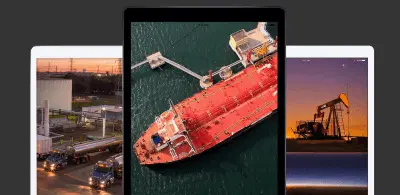- September 5, 2023
- Posted by: Tom Hedge
- Blogs

Should businesses use a diverse range of specialised systems, each excelling in its unique area? Or should they lean towards a single integrated system that offers comprehensive functionality?
We believe the latter is the best option for an ETRM system (one example is our Techoil software). In this article, we explain why and look at the pros and cons of each approach.
ETRM Software in Today’s Energy Sector
Energy trading is becoming increasingly sophisticated, with a vast range of instruments and commodities being traded daily, and the risks involved are multifaceted. An ETRM platform is designed to operate within this complex framework, aiming to provide traders and risk managers with the tools they need to make well-informed decisions.
As such, the choice of platform isn’t merely a technical decision; it’s intertwined with the strategic vision of the company.
Do they envision themselves as constantly adapting and shifting with a diverse set of tools at their disposal? Or do they see themselves as a steadfast entity, prioritising having a consistent and reliable framework? (Of course, the two aren’t mutually exclusive; the latter benefits from new feature releases as new, innovative tools are developed.)
In addition, the choice impacts various stakeholders, from traders and risk managers to IT teams, financial departments and clients. Each has a unique set of needs, and the chosen ETRM platform must cater to this wide spectrum of requirements.
With that in mind, let’s look at the pros and cons of choosing a single, comprehensive ETRM system versus a handful of solutions with niche functionality.
One ETRM Platform to Rule Them All
Pros of a Unified Energy Trading Management Approach
Single Point of Responsibility
The so-called ‘one neck to throttle’ approach comes with a single point of responsibility. Instead of juggling various vendors, each accountable for their individual systems, a business has one system (and hence, one vendor) to hold responsible for performance and functionality.
Without the clarity of only dealing with one vendor comes accountability issues. If a problem arises and the cause is not clear, each vendor might point fingers at the others. With a single integrated system, there is a clear line of responsibility, eliminating the ‘passing of the buck’.
Integration Options
One of the primary challenges of using multiple systems is the complexity of integrating them. Diverse systems often come with disparate architectures, leading to potential inefficiencies and incompatibilities. However, with a unified system, there is no need to integrate separate ETRM tools.
A singular ETRM system offers a streamlined, coherent workflow, enhancing operational efficiency. In addition, integrating the system with software for other business processes (such as ERP systems) is easier in this scenario as well.
Cost-Effectiveness
The initial cost of implementing multiple systems can be staggering, let alone the subsequent expenses tied to support, customisation, and training. A single integrated platform often offers a more predictable and consolidated pricing structure.
Simplicity
A significant portion of any system’s features often goes unused. Just think of Excel – of the total number of users, how many of them are likely to even know about its wider functionality, let alone use it?
As such, using many different systems overloaded with features can lead to needless complexity, affecting both user experience and system performance. For example, while a platform might have a myriad of risk assessment tools, traders might only regularly use a handful.
A single, well-designed system can focus on refining the core functionalities, ensuring user-friendliness and optimal performance.
Cons of Using a Single ETRM System
Potential Limitations in Functionality
No platform can be the ultimate best in every possible aspect and there might be areas where a singular system doesn’t measure up to the specialised capabilities of niche software. The best solution is to check the strengths of each potential option and find the best match for your needs.
Risk of Over-Reliance
Putting all your eggs in one basket can be risky in terms of functionality and customer support. Again, it’s a matter of investigating the vendor and functionality before committing to anything and having a thorough demo of the software.
If the company you choose does not provide high standards of support and issues with the system occurred, it could impact the entirety of a business’s operations. At Inatech, we know just how crucial business continuity is in energy trading. That’s why we provide the highest standards of support from day one, throughout implementation, and after going live – for the entire customer journey.
Pros and Cons of Specialised ETRM Systems
Pros
Best ETRM Software for Each Function
Opting for specialised systems allows a company to select the best software for each specific function. For example, a system specialised in renewables trading might excel in that domain but may be less adept at physical commodity logistics.
Reduced Downtime Risk
If one system fails or experiences issues, it won’t necessarily bring down the entire ETRM platform. This is particularly crucial in scenarios where downtime can result in substantial financial loss.
Incremental Implementation
Firms can phase their technology investments by implementing distinct systems. This can be less disruptive and allows them to realise benefits in one area without waiting for a full platform rollout. (With that said, implementing multiple systems at once can be time-consuming due to the integrations required.)
Vendor Diversification
By not putting all eggs in one basket, firms can mitigate risks associated with vendor performance or strategic shifts. This diversification can ensure the continuity of business processes.
Resource Allocation
Depending on the size of the company and the responsibilities assigned to each member of staff, it may be more suitable to train each individual on a specific system that has the functionality they need as opposed to using comprehensive, integrated systems that require a broader skill set.
Cons
As mentioned, the disadvantages of using separate systems include the following:
- A potential lack of accountability due to having multiple vendors
- Integration difficulties
- The high cost of the software itself, and support, customisation, and training
- The risk of many features not being used, which can make the costs unjustifiable
- Unnecessary complexity that causes operational inefficiencies
Data Consistency Issues
Another drawback we must address is the potential for data consistency issues, which arise when multiple systems operate in tandem without a seamless integration framework. Each system might maintain its own database, and without synchronised updates, discrepancies can emerge.
For example, if one system updates a piece of information and this update isn’t immediately reflected in the other systems, it leads to inconsistent data views. Over time, such inconsistencies can compound, leading to significant discrepancies in reports, analytics, and decision-making inputs.
This not only undermines the integrity of the data but can also result in operational inefficiencies, financial inaccuracies, and strategic missteps.
Ensuring data consistency across specialised systems often requires robust integration mechanisms, reconciliation processes, and stringent data governance policies.
To summarise, separate systems do not provide a single source of truth.
Conclusion
While there’s no universal correct choice between the two approaches, our preference leans towards a unified, integrated platform – one that provides simplicity, efficiency, clarity of vendor responsibility, and a streamlined, coherent workflow.
The core tenet is that the chosen ETRM platform should enable businesses to navigate the complexities of the market with confidence and agility. It’s essential for businesses to evaluate their specific needs, the dynamics of their operations, and the level of complexity they are willing and able to manage without compromising performance.
Inatech’s Techoil is a prime example of a unified ETRM platform for crude and refined products trading. It is truly best-in-class, built upon deep industry expertise, providing end-to-end automation and complete visibility for making rapid decisions. Contact us today to book a demo of Techoil or to enquire about any of our ETRM solutions.


